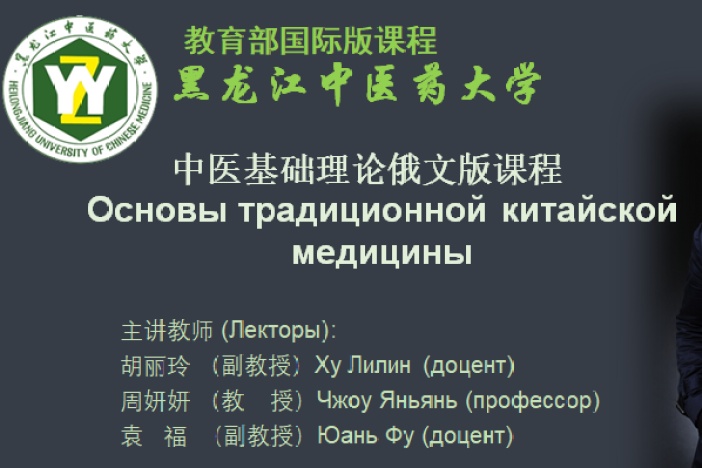收藏
课程目录
1 Welcome to EAP course 欢迎学习“学术英语课程”
 2.1 Introduction to the module of listening skills 模块介绍
2.1 Introduction to the module of listening skills 模块介绍
 2.2.1 Predicting the content 预测听力内容
2.2.1 Predicting the content 预测听力内容
 2.2.2 Predicting the content 预测听力内容
2.2.2 Predicting the content 预测听力内容
 2.3.1 Understanding main ideas: key words 抓住关键词理解大意
2.3.1 Understanding main ideas: key words 抓住关键词理解大意
 2.3.2 Understanding main ideas: key words 抓住关键词理解大意
2.3.2 Understanding main ideas: key words 抓住关键词理解大意
 2.4.1 Understanding supporting evidence (I: explicit means 理解支持性证据 (I:显性证据
2.4.1 Understanding supporting evidence (I: explicit means 理解支持性证据 (I:显性证据
 2.4.2 Understanding supporting evidence (I: explicit means 理解支持性证据 (I:显性证据
2.4.2 Understanding supporting evidence (I: explicit means 理解支持性证据 (I:显性证据
 2.5.1 Understanding supporting evidence (II: implicit means 理解支持性证据 (II:隐性证据
2.5.1 Understanding supporting evidence (II: implicit means 理解支持性证据 (II:隐性证据
 2.5.2 Understanding supporting evidence (II: implicit means 理解支持性证据 (II:隐性证据
2.5.2 Understanding supporting evidence (II: implicit means 理解支持性证据 (II:隐性证据
 2.6.1 Recognizing rhetorical questions 辨别修辞问句
2.6.1 Recognizing rhetorical questions 辨别修辞问句
 2.6.2 Recognizing rhetorical questions 辨别修辞问句
2.6.2 Recognizing rhetorical questions 辨别修辞问句
 2.7.1 Understanding the organization of a lecture (I: chronological order 理解讲座结构 (I:时间顺序
2.7.1 Understanding the organization of a lecture (I: chronological order 理解讲座结构 (I:时间顺序
 2.7.2 Understanding the organization of a lecture (I: chronological order 理解讲座结构 (I:时间顺序
2.7.2 Understanding the organization of a lecture (I: chronological order 理解讲座结构 (I:时间顺序
 2.8.1 Understanding the organization of a lecture (II: categorization 理解讲座结构 (II:归类
2.8.1 Understanding the organization of a lecture (II: categorization 理解讲座结构 (II:归类
 2.8.2 Understanding the organization of a lecture (II: categorization 理解讲座结构 (II:归类
2.8.2 Understanding the organization of a lecture (II: categorization 理解讲座结构 (II:归类
 2.9.1 Handling unfamiliar words 应对不熟悉词汇
2.9.1 Handling unfamiliar words 应对不熟悉词汇
 2.9.2 Handling unfamiliar words 应对不熟悉词汇
2.9.2 Handling unfamiliar words 应对不熟悉词汇
 2.10.1 Understanding vocabulary from the context 从上下文理解词汇
2.10.1 Understanding vocabulary from the context 从上下文理解词汇
 2.10.2 Understanding vocabulary from the context 从上下文理解词汇
2.10.2 Understanding vocabulary from the context 从上下文理解词汇
 2.11.1 Focusing on numbers & statistics 注意数字与数据
2.11.1 Focusing on numbers & statistics 注意数字与数据
 2.11.2 Focusing on numbers & statistics 注意数字与数据
2.11.2 Focusing on numbers & statistics 注意数字与数据
 2.12.1 Recognizing analogy 辨别类比
2.12.1 Recognizing analogy 辨别类比
 2.12.2 Recognizing analogy 辨别类比
2.12.2 Recognizing analogy 辨别类比
 2.13.1 Recognizing signposting language (I: contrast 辨别指示性语言 (I:对比
2.13.1 Recognizing signposting language (I: contrast 辨别指示性语言 (I:对比
 2.13.2 Recognizing signposting language (I: contrast 辨别指示性语言 (I:对比
2.13.2 Recognizing signposting language (I: contrast 辨别指示性语言 (I:对比
 2.14.1 Recognizing signposting language (II: consequence 辨别指示性语言 (II:结果
2.14.1 Recognizing signposting language (II: consequence 辨别指示性语言 (II:结果
 2.14.2 Recognizing signposting language (II: consequence 辨别指示性语言 (II:结果
2.14.2 Recognizing signposting language (II: consequence 辨别指示性语言 (II:结果
 2.15.1 Recognizing signposting language (III: presenting factual information 辨别指示性语言 (III:陈述事实信息
2.15.1 Recognizing signposting language (III: presenting factual information 辨别指示性语言 (III:陈述事实信息
 2.15.2 Recognizing signposting language (III: presenting factual information 辨别指示性语言 (III:陈述事实信息
2.15.2 Recognizing signposting language (III: presenting factual information 辨别指示性语言 (III:陈述事实信息
 2.16.1 Note-taking: numbers & diagrams 记笔记:数字和图表
2.16.1 Note-taking: numbers & diagrams 记笔记:数字和图表
 2.16.2 Note-taking: numbers & diagrams 记笔记:数字和图表
2.16.2 Note-taking: numbers & diagrams 记笔记:数字和图表
 2.16.3 Note-taking: numbers & diagrams 记笔记:数字和图表
2.16.3 Note-taking: numbers & diagrams 记笔记:数字和图表
 2.17 Summary to the module of listening skills 模块总结
2.17 Summary to the module of listening skills 模块总结
 2.18 Module test 模块测试
2.18 Module test 模块测试
 3.1 Introduction to the module of reading skills 模块介绍
3.1 Introduction to the module of reading skills 模块介绍
 3.2 Surveying an article 浏览文章
3.2 Surveying an article 浏览文章
 3.3 Skimming and scanning 查读和略读
3.3 Skimming and scanning 查读和略读
 3.4 Recognizing text organization / structure 识别文章结构
3.4 Recognizing text organization / structure 识别文章结构
 3.5 Identifying the author's evaluation 识别作者评价
3.5 Identifying the author's evaluation 识别作者评价
 3.6 Identifying the thesis statement 识别文章中心句
3.6 Identifying the thesis statement 识别文章中心句
 3.7 Increasing reading speed 提高阅读速度
3.7 Increasing reading speed 提高阅读速度
 3.8 Guessing unfamiliar words from context 从上下文猜测词意
3.8 Guessing unfamiliar words from context 从上下文猜测词意
 3.9 Recognizing topic sentence and supporting evidence 识别主题句和支持性证据
3.9 Recognizing topic sentence and supporting evidence 识别主题句和支持性证据
 3.10 Understanding quotations 理解引语
3.10 Understanding quotations 理解引语
 3.11 Using questions for effective reading 使用问句促进阅读
3.11 Using questions for effective reading 使用问句促进阅读
 3.12 Recognizing classification 识别分类
3.12 Recognizing classification 识别分类
 3.13 Recognizing comparison and contrast 识别比较和对比
3.13 Recognizing comparison and contrast 识别比较和对比
 3.14 Recognizing cause and effect 识别因果关系
3.14 Recognizing cause and effect 识别因果关系
 3.15 Annotating the text 标记文章
3.15 Annotating the text 标记文章
 3.16 Summary to the module of reading skills 模块总结
3.16 Summary to the module of reading skills 模块总结
 4.1 Introduction to the module of speaking skills 模块介绍
4.1 Introduction to the module of speaking skills 模块介绍
 4.2 Preparing for a presentation 准备陈述报告
4.2 Preparing for a presentation 准备陈述报告
 4.3.1 Opening a presentation 开始陈述报告
4.3.1 Opening a presentation 开始陈述报告
 4.3.2 Opening a presentation 开始陈述报告
4.3.2 Opening a presentation 开始陈述报告
 4.4.1 Presenting the main body 陈述报告主体
4.4.1 Presenting the main body 陈述报告主体
 4.4.2 Presenting the main body 陈述报告主体
4.4.2 Presenting the main body 陈述报告主体
 4.5.1 Concluding the presentation 结束陈述报告
4.5.1 Concluding the presentation 结束陈述报告
 4.5.2 Concluding the presentation 结束陈述报告
4.5.2 Concluding the presentation 结束陈述报告
 4.6 Evaluating students' presentation 评价学生的陈述报告
4.6 Evaluating students' presentation 评价学生的陈述报告
 4.7.1 Opening a discussion; Agreeing and disagreeing 开始讨论;表达赞同与不赞同
4.7.1 Opening a discussion; Agreeing and disagreeing 开始讨论;表达赞同与不赞同
 4.7.2 Opening a discussion; Agreeing and disagreeing 开始讨论;表达赞同与不赞同
4.7.2 Opening a discussion; Agreeing and disagreeing 开始讨论;表达赞同与不赞同
 4.8.1 Keeping a discussion going; Discussing the pros and cons 保持讨论;支持与反对
4.8.1 Keeping a discussion going; Discussing the pros and cons 保持讨论;支持与反对
 4.8.2 Keeping a discussion going; Discussing the pros and cons 保持讨论;支持与反对
4.8.2 Keeping a discussion going; Discussing the pros and cons 保持讨论;支持与反对
 4.9.1 Interrupting politely; Asking for clarification or confirmation 客气地打断讨论;要求对方阐释或确认
4.9.1 Interrupting politely; Asking for clarification or confirmation 客气地打断讨论;要求对方阐释或确认
 4.9.2 Interrupting politely; Asking for clarification or confirmation 客气地打断讨论;要求对方阐释或确认
4.9.2 Interrupting politely; Asking for clarification or confirmation 客气地打断讨论;要求对方阐释或确认
 4.10.1 Expressing an opinion; Supporting an opinion 表达观点;支撑观点
4.10.1 Expressing an opinion; Supporting an opinion 表达观点;支撑观点
 4.10.2 Expressing an opinion; Supporting an opinion 表达观点;支撑观点
4.10.2 Expressing an opinion; Supporting an opinion 表达观点;支撑观点
 4.11 Evaluating students' group discussion 评价学生的讨论
4.11 Evaluating students' group discussion 评价学生的讨论
 4.12 Summary to the module of speaking skills 模块总结
4.12 Summary to the module of speaking skills 模块总结
 5.1 Introduction to the module of writing skills 模块介绍
5.1 Introduction to the module of writing skills 模块介绍
 5.2 Writing an introduction 写文章开头
5.2 Writing an introduction 写文章开头
 5.3 Writing a thesis statement 写文章中心句
5.3 Writing a thesis statement 写文章中心句
 5.4 Writing the main body 写文章主体
5.4 Writing the main body 写文章主体
 5.5 Writing a body paragraph 写主体段落
5.5 Writing a body paragraph 写主体段落
 5.6 Writing a conclusion 写文章结论
5.6 Writing a conclusion 写文章结论
 5.7 Evaluating students' writing (structure 评价学生的写作(结构方面)
5.7 Evaluating students' writing (structure 评价学生的写作(结构方面)
 5.8.1 Writing in formal languge 用正式文体写作
5.8.1 Writing in formal languge 用正式文体写作
 5.8.2 Writing in formal languge 用正式文体写作
5.8.2 Writing in formal languge 用正式文体写作
 5.9.1 Writing in cautious language 用谨慎的话语写作
5.9.1 Writing in cautious language 用谨慎的话语写作
 5.9.2 Writing in cautious language 用谨慎的话语写作
5.9.2 Writing in cautious language 用谨慎的话语写作
 5.10.1 Writing in efficient language 用简练的话语写作
5.10.1 Writing in efficient language 用简练的话语写作
 5.10.2 Writing in efficient language 用简练的话语写作
5.10.2 Writing in efficient language 用简练的话语写作
 5.11 Avoiding plagiarism (quoting, paraphrasing and summarizing 避免学术抄袭(引用,改写,总结)
5.11 Avoiding plagiarism (quoting, paraphrasing and summarizing 避免学术抄袭(引用,改写,总结)
 5.12 Avoiding plagiarism (acknowledging sources 避免学术抄袭(注明出处)
5.12 Avoiding plagiarism (acknowledging sources 避免学术抄袭(注明出处)
 5.13 Summary to the module of writing skills 模块总结
5.13 Summary to the module of writing skills 模块总结
 6.1 Introduction to the module of translating skills 模块介绍
6.1 Introduction to the module of translating skills 模块介绍
 6.2 What is translation 什么是翻译
6.2 What is translation 什么是翻译
 6.3 How to get ready for translation? 怎样做好翻译的准备?
6.3 How to get ready for translation? 怎样做好翻译的准备?
 6.4 Word-for-word translation 逐字翻译
6.4 Word-for-word translation 逐字翻译
 6.5 Diction (I: grammatical clues 词意的选择(I):语法线索
6.5 Diction (I: grammatical clues 词意的选择(I):语法线索
 6.6 Diction (II: collocation clues 词意的选择(I):词汇搭配线索
6.6 Diction (II: collocation clues 词意的选择(I):词汇搭配线索
 6.7 Omission (I: leaving out unnecessary prepositions and conjunctions 省略法(I):删减不必要的介词和连词
6.7 Omission (I: leaving out unnecessary prepositions and conjunctions 省略法(I):删减不必要的介词和连词
 6.8 Omission (II: leaving out unnecessary articles 省略法(II):删减不必要的冠词
6.8 Omission (II: leaving out unnecessary articles 省略法(II):删减不必要的冠词
 6.9 Conversion (I: translating nouns as adjectives or verbs 词性转换(I):名词翻为形容词或动词
6.9 Conversion (I: translating nouns as adjectives or verbs 词性转换(I):名词翻为形容词或动词
 6.10 Conversion (II: translating verbs as nouns or adverbs 词性转换(II):动词翻为名词或副词
6.10 Conversion (II: translating verbs as nouns or adverbs 词性转换(II):动词翻为名词或副词
 6.11 Addition (I: adding nouns 增词法(I):增加名词
6.11 Addition (I: adding nouns 增词法(I):增加名词
 6.12 Addition (II: adding adjectives or adverbs 增词法(II):增加形容词或副词
6.12 Addition (II: adding adjectives or adverbs 增词法(II):增加形容词或副词
 6.13 Addition (III: adding verbs 增词法(III):增加动词
6.13 Addition (III: adding verbs 增词法(III):增加动词
 6.14 Addition (IV: adding conjunctions 增词法(IV):增加连词
6.14 Addition (IV: adding conjunctions 增词法(IV):增加连词
 6.15 Translating relative clauses (I: as pre-modifiers 翻译关系从句(I):作为前置修饰语
6.15 Translating relative clauses (I: as pre-modifiers 翻译关系从句(I):作为前置修饰语
 6.16 Translating relative clauses (II: as post-modifiers 翻译关系从句(II):作为后置修饰语
6.16 Translating relative clauses (II: as post-modifiers 翻译关系从句(II):作为后置修饰语
 6.17 Translating relative clauses (III: merging 翻译关系从句(I):合并
6.17 Translating relative clauses (III: merging 翻译关系从句(I):合并
 6.18 Translating relative clauses (IV: dividing 翻译关系从句(I):分裂
6.18 Translating relative clauses (IV: dividing 翻译关系从句(I):分裂
 6.19 Translating passive constructions (I: as active constructions 翻译被动结构(I):翻为主动结构
6.19 Translating passive constructions (I: as active constructions 翻译被动结构(I):翻为主动结构
 6.20 Translating passive constructions (II: as passive constructions 翻译被动结构(I):翻为被动结构
6.20 Translating passive constructions (II: as passive constructions 翻译被动结构(I):翻为被动结构
 6.21 Evaluating students' translation 评价学生的翻译作品
6.21 Evaluating students' translation 评价学生的翻译作品
 6.22 Summary to the module of translating skills 模块总结
6.22 Summary to the module of translating skills 模块总结

 2.1 Introduction to the module of listening skills 模块介绍
2.1 Introduction to the module of listening skills 模块介绍
 2.2.1 Predicting the content 预测听力内容
2.2.1 Predicting the content 预测听力内容
 2.2.2 Predicting the content 预测听力内容
2.2.2 Predicting the content 预测听力内容
 2.3.1 Understanding main ideas: key words 抓住关键词理解大意
2.3.1 Understanding main ideas: key words 抓住关键词理解大意
 2.3.2 Understanding main ideas: key words 抓住关键词理解大意
2.3.2 Understanding main ideas: key words 抓住关键词理解大意
 2.4.1 Understanding supporting evidence (I: explicit means 理解支持性证据 (I:显性证据
2.4.1 Understanding supporting evidence (I: explicit means 理解支持性证据 (I:显性证据
 2.4.2 Understanding supporting evidence (I: explicit means 理解支持性证据 (I:显性证据
2.4.2 Understanding supporting evidence (I: explicit means 理解支持性证据 (I:显性证据
 2.5.1 Understanding supporting evidence (II: implicit means 理解支持性证据 (II:隐性证据
2.5.1 Understanding supporting evidence (II: implicit means 理解支持性证据 (II:隐性证据
 2.5.2 Understanding supporting evidence (II: implicit means 理解支持性证据 (II:隐性证据
2.5.2 Understanding supporting evidence (II: implicit means 理解支持性证据 (II:隐性证据
 2.6.1 Recognizing rhetorical questions 辨别修辞问句
2.6.1 Recognizing rhetorical questions 辨别修辞问句
 2.6.2 Recognizing rhetorical questions 辨别修辞问句
2.6.2 Recognizing rhetorical questions 辨别修辞问句
 2.7.1 Understanding the organization of a lecture (I: chronological order 理解讲座结构 (I:时间顺序
2.7.1 Understanding the organization of a lecture (I: chronological order 理解讲座结构 (I:时间顺序
 2.7.2 Understanding the organization of a lecture (I: chronological order 理解讲座结构 (I:时间顺序
2.7.2 Understanding the organization of a lecture (I: chronological order 理解讲座结构 (I:时间顺序
 2.8.1 Understanding the organization of a lecture (II: categorization 理解讲座结构 (II:归类
2.8.1 Understanding the organization of a lecture (II: categorization 理解讲座结构 (II:归类
 2.8.2 Understanding the organization of a lecture (II: categorization 理解讲座结构 (II:归类
2.8.2 Understanding the organization of a lecture (II: categorization 理解讲座结构 (II:归类
 2.9.1 Handling unfamiliar words 应对不熟悉词汇
2.9.1 Handling unfamiliar words 应对不熟悉词汇
 2.9.2 Handling unfamiliar words 应对不熟悉词汇
2.9.2 Handling unfamiliar words 应对不熟悉词汇
 2.10.1 Understanding vocabulary from the context 从上下文理解词汇
2.10.1 Understanding vocabulary from the context 从上下文理解词汇
 2.10.2 Understanding vocabulary from the context 从上下文理解词汇
2.10.2 Understanding vocabulary from the context 从上下文理解词汇
 2.11.1 Focusing on numbers & statistics 注意数字与数据
2.11.1 Focusing on numbers & statistics 注意数字与数据
 2.11.2 Focusing on numbers & statistics 注意数字与数据
2.11.2 Focusing on numbers & statistics 注意数字与数据
 2.12.1 Recognizing analogy 辨别类比
2.12.1 Recognizing analogy 辨别类比
 2.12.2 Recognizing analogy 辨别类比
2.12.2 Recognizing analogy 辨别类比
 2.13.1 Recognizing signposting language (I: contrast 辨别指示性语言 (I:对比
2.13.1 Recognizing signposting language (I: contrast 辨别指示性语言 (I:对比
 2.13.2 Recognizing signposting language (I: contrast 辨别指示性语言 (I:对比
2.13.2 Recognizing signposting language (I: contrast 辨别指示性语言 (I:对比
 2.14.1 Recognizing signposting language (II: consequence 辨别指示性语言 (II:结果
2.14.1 Recognizing signposting language (II: consequence 辨别指示性语言 (II:结果
 2.14.2 Recognizing signposting language (II: consequence 辨别指示性语言 (II:结果
2.14.2 Recognizing signposting language (II: consequence 辨别指示性语言 (II:结果
 2.15.1 Recognizing signposting language (III: presenting factual information 辨别指示性语言 (III:陈述事实信息
2.15.1 Recognizing signposting language (III: presenting factual information 辨别指示性语言 (III:陈述事实信息
 2.15.2 Recognizing signposting language (III: presenting factual information 辨别指示性语言 (III:陈述事实信息
2.15.2 Recognizing signposting language (III: presenting factual information 辨别指示性语言 (III:陈述事实信息
 2.16.1 Note-taking: numbers & diagrams 记笔记:数字和图表
2.16.1 Note-taking: numbers & diagrams 记笔记:数字和图表
 2.16.2 Note-taking: numbers & diagrams 记笔记:数字和图表
2.16.2 Note-taking: numbers & diagrams 记笔记:数字和图表
 2.16.3 Note-taking: numbers & diagrams 记笔记:数字和图表
2.16.3 Note-taking: numbers & diagrams 记笔记:数字和图表
 2.17 Summary to the module of listening skills 模块总结
2.17 Summary to the module of listening skills 模块总结
 2.18 Module test 模块测试
2.18 Module test 模块测试
 3.1 Introduction to the module of reading skills 模块介绍
3.1 Introduction to the module of reading skills 模块介绍
 3.2 Surveying an article 浏览文章
3.2 Surveying an article 浏览文章
 3.3 Skimming and scanning 查读和略读
3.3 Skimming and scanning 查读和略读
 3.4 Recognizing text organization / structure 识别文章结构
3.4 Recognizing text organization / structure 识别文章结构
 3.5 Identifying the author's evaluation 识别作者评价
3.5 Identifying the author's evaluation 识别作者评价
 3.6 Identifying the thesis statement 识别文章中心句
3.6 Identifying the thesis statement 识别文章中心句
 3.7 Increasing reading speed 提高阅读速度
3.7 Increasing reading speed 提高阅读速度
 3.8 Guessing unfamiliar words from context 从上下文猜测词意
3.8 Guessing unfamiliar words from context 从上下文猜测词意
 3.9 Recognizing topic sentence and supporting evidence 识别主题句和支持性证据
3.9 Recognizing topic sentence and supporting evidence 识别主题句和支持性证据
 3.10 Understanding quotations 理解引语
3.10 Understanding quotations 理解引语
 3.11 Using questions for effective reading 使用问句促进阅读
3.11 Using questions for effective reading 使用问句促进阅读
 3.12 Recognizing classification 识别分类
3.12 Recognizing classification 识别分类
 3.13 Recognizing comparison and contrast 识别比较和对比
3.13 Recognizing comparison and contrast 识别比较和对比
 3.14 Recognizing cause and effect 识别因果关系
3.14 Recognizing cause and effect 识别因果关系
 3.15 Annotating the text 标记文章
3.15 Annotating the text 标记文章
 3.16 Summary to the module of reading skills 模块总结
3.16 Summary to the module of reading skills 模块总结
 4.1 Introduction to the module of speaking skills 模块介绍
4.1 Introduction to the module of speaking skills 模块介绍
 4.2 Preparing for a presentation 准备陈述报告
4.2 Preparing for a presentation 准备陈述报告
 4.3.1 Opening a presentation 开始陈述报告
4.3.1 Opening a presentation 开始陈述报告
 4.3.2 Opening a presentation 开始陈述报告
4.3.2 Opening a presentation 开始陈述报告
 4.4.1 Presenting the main body 陈述报告主体
4.4.1 Presenting the main body 陈述报告主体
 4.4.2 Presenting the main body 陈述报告主体
4.4.2 Presenting the main body 陈述报告主体
 4.5.1 Concluding the presentation 结束陈述报告
4.5.1 Concluding the presentation 结束陈述报告
 4.5.2 Concluding the presentation 结束陈述报告
4.5.2 Concluding the presentation 结束陈述报告
 4.6 Evaluating students' presentation 评价学生的陈述报告
4.6 Evaluating students' presentation 评价学生的陈述报告
 4.7.1 Opening a discussion; Agreeing and disagreeing 开始讨论;表达赞同与不赞同
4.7.1 Opening a discussion; Agreeing and disagreeing 开始讨论;表达赞同与不赞同
 4.7.2 Opening a discussion; Agreeing and disagreeing 开始讨论;表达赞同与不赞同
4.7.2 Opening a discussion; Agreeing and disagreeing 开始讨论;表达赞同与不赞同
 4.8.1 Keeping a discussion going; Discussing the pros and cons 保持讨论;支持与反对
4.8.1 Keeping a discussion going; Discussing the pros and cons 保持讨论;支持与反对
 4.8.2 Keeping a discussion going; Discussing the pros and cons 保持讨论;支持与反对
4.8.2 Keeping a discussion going; Discussing the pros and cons 保持讨论;支持与反对
 4.9.1 Interrupting politely; Asking for clarification or confirmation 客气地打断讨论;要求对方阐释或确认
4.9.1 Interrupting politely; Asking for clarification or confirmation 客气地打断讨论;要求对方阐释或确认
 4.9.2 Interrupting politely; Asking for clarification or confirmation 客气地打断讨论;要求对方阐释或确认
4.9.2 Interrupting politely; Asking for clarification or confirmation 客气地打断讨论;要求对方阐释或确认
 4.10.1 Expressing an opinion; Supporting an opinion 表达观点;支撑观点
4.10.1 Expressing an opinion; Supporting an opinion 表达观点;支撑观点
 4.10.2 Expressing an opinion; Supporting an opinion 表达观点;支撑观点
4.10.2 Expressing an opinion; Supporting an opinion 表达观点;支撑观点
 4.11 Evaluating students' group discussion 评价学生的讨论
4.11 Evaluating students' group discussion 评价学生的讨论
 4.12 Summary to the module of speaking skills 模块总结
4.12 Summary to the module of speaking skills 模块总结
 5.1 Introduction to the module of writing skills 模块介绍
5.1 Introduction to the module of writing skills 模块介绍
 5.2 Writing an introduction 写文章开头
5.2 Writing an introduction 写文章开头
 5.3 Writing a thesis statement 写文章中心句
5.3 Writing a thesis statement 写文章中心句
 5.4 Writing the main body 写文章主体
5.4 Writing the main body 写文章主体
 5.5 Writing a body paragraph 写主体段落
5.5 Writing a body paragraph 写主体段落
 5.6 Writing a conclusion 写文章结论
5.6 Writing a conclusion 写文章结论
 5.7 Evaluating students' writing (structure 评价学生的写作(结构方面)
5.7 Evaluating students' writing (structure 评价学生的写作(结构方面)
 5.8.1 Writing in formal languge 用正式文体写作
5.8.1 Writing in formal languge 用正式文体写作
 5.8.2 Writing in formal languge 用正式文体写作
5.8.2 Writing in formal languge 用正式文体写作
 5.9.1 Writing in cautious language 用谨慎的话语写作
5.9.1 Writing in cautious language 用谨慎的话语写作
 5.9.2 Writing in cautious language 用谨慎的话语写作
5.9.2 Writing in cautious language 用谨慎的话语写作
 5.10.1 Writing in efficient language 用简练的话语写作
5.10.1 Writing in efficient language 用简练的话语写作
 5.10.2 Writing in efficient language 用简练的话语写作
5.10.2 Writing in efficient language 用简练的话语写作
 5.11 Avoiding plagiarism (quoting, paraphrasing and summarizing 避免学术抄袭(引用,改写,总结)
5.11 Avoiding plagiarism (quoting, paraphrasing and summarizing 避免学术抄袭(引用,改写,总结)
 5.12 Avoiding plagiarism (acknowledging sources 避免学术抄袭(注明出处)
5.12 Avoiding plagiarism (acknowledging sources 避免学术抄袭(注明出处)
 5.13 Summary to the module of writing skills 模块总结
5.13 Summary to the module of writing skills 模块总结
 6.1 Introduction to the module of translating skills 模块介绍
6.1 Introduction to the module of translating skills 模块介绍
 6.2 What is translation 什么是翻译
6.2 What is translation 什么是翻译
 6.3 How to get ready for translation? 怎样做好翻译的准备?
6.3 How to get ready for translation? 怎样做好翻译的准备?
 6.4 Word-for-word translation 逐字翻译
6.4 Word-for-word translation 逐字翻译
 6.5 Diction (I: grammatical clues 词意的选择(I):语法线索
6.5 Diction (I: grammatical clues 词意的选择(I):语法线索
 6.6 Diction (II: collocation clues 词意的选择(I):词汇搭配线索
6.6 Diction (II: collocation clues 词意的选择(I):词汇搭配线索
 6.7 Omission (I: leaving out unnecessary prepositions and conjunctions 省略法(I):删减不必要的介词和连词
6.7 Omission (I: leaving out unnecessary prepositions and conjunctions 省略法(I):删减不必要的介词和连词
 6.8 Omission (II: leaving out unnecessary articles 省略法(II):删减不必要的冠词
6.8 Omission (II: leaving out unnecessary articles 省略法(II):删减不必要的冠词
 6.9 Conversion (I: translating nouns as adjectives or verbs 词性转换(I):名词翻为形容词或动词
6.9 Conversion (I: translating nouns as adjectives or verbs 词性转换(I):名词翻为形容词或动词
 6.10 Conversion (II: translating verbs as nouns or adverbs 词性转换(II):动词翻为名词或副词
6.10 Conversion (II: translating verbs as nouns or adverbs 词性转换(II):动词翻为名词或副词
 6.11 Addition (I: adding nouns 增词法(I):增加名词
6.11 Addition (I: adding nouns 增词法(I):增加名词
 6.12 Addition (II: adding adjectives or adverbs 增词法(II):增加形容词或副词
6.12 Addition (II: adding adjectives or adverbs 增词法(II):增加形容词或副词
 6.13 Addition (III: adding verbs 增词法(III):增加动词
6.13 Addition (III: adding verbs 增词法(III):增加动词
 6.14 Addition (IV: adding conjunctions 增词法(IV):增加连词
6.14 Addition (IV: adding conjunctions 增词法(IV):增加连词
 6.15 Translating relative clauses (I: as pre-modifiers 翻译关系从句(I):作为前置修饰语
6.15 Translating relative clauses (I: as pre-modifiers 翻译关系从句(I):作为前置修饰语
 6.16 Translating relative clauses (II: as post-modifiers 翻译关系从句(II):作为后置修饰语
6.16 Translating relative clauses (II: as post-modifiers 翻译关系从句(II):作为后置修饰语
 6.17 Translating relative clauses (III: merging 翻译关系从句(I):合并
6.17 Translating relative clauses (III: merging 翻译关系从句(I):合并
 6.18 Translating relative clauses (IV: dividing 翻译关系从句(I):分裂
6.18 Translating relative clauses (IV: dividing 翻译关系从句(I):分裂
 6.19 Translating passive constructions (I: as active constructions 翻译被动结构(I):翻为主动结构
6.19 Translating passive constructions (I: as active constructions 翻译被动结构(I):翻为主动结构
 6.20 Translating passive constructions (II: as passive constructions 翻译被动结构(I):翻为被动结构
6.20 Translating passive constructions (II: as passive constructions 翻译被动结构(I):翻为被动结构
 6.21 Evaluating students' translation 评价学生的翻译作品
6.21 Evaluating students' translation 评价学生的翻译作品
 6.22 Summary to the module of translating skills 模块总结
6.22 Summary to the module of translating skills 模块总结

课程详情
本课程基于《大学学术英语综合教程》,将学术英语的听、说、读、写、译等技能有机融合起来,教授各学科专业学习和研究所需要的通用学术英语,旨在培养学生用英语进行学业学习、学术交流的能力和学术素养;同时拓展其国际视野,提升跨文化交流沟通和合作的能力以及参与国际竞争的能力,以适应国家的经济和社会发展需要。(华南理工大学)
本课程基于《大学学术英语综合教程》,将学术英语的听、说、读、写、译等技能有机融合起来,教授各学科专业学习和研究所需要的通用学术英语,旨在培养学生用英语进行学业学习、学术交流的能力和学术素养;同时拓展其国际视野,提升跨文化交流沟通和合作的能力以及参与国际竞争的能力,以适应国家的经济和社会发展需要。(华南理工大学)
本课程基于《大学学术英语综合教程》,将学术英语的听、说、读、写、译等技能有机融合起来,教授各学科专业学习和研究所需要的通用学术英语,旨在培养学生用英语进行学业学习、学术交流的能力和学术素养;同时拓展其国际视野,提升跨文化交流沟通和合作的能力以及参与国际竞争的能力,以适应国家的经济和社会发展需要。(华南理工大学)
上一篇:新东方留学英语培训课程
下一篇:英汉互译方法与技巧












